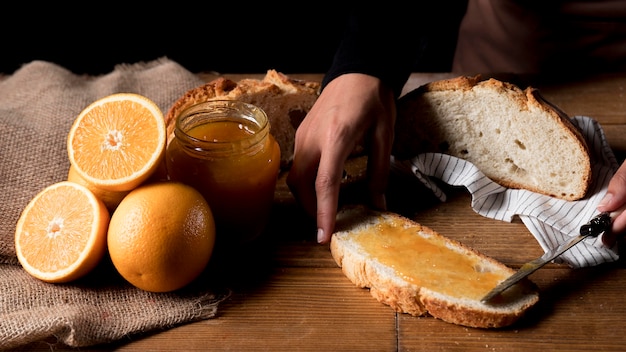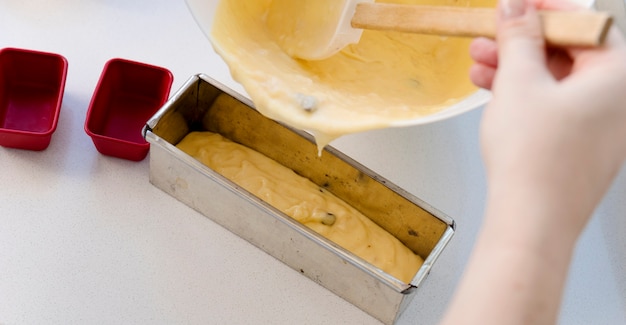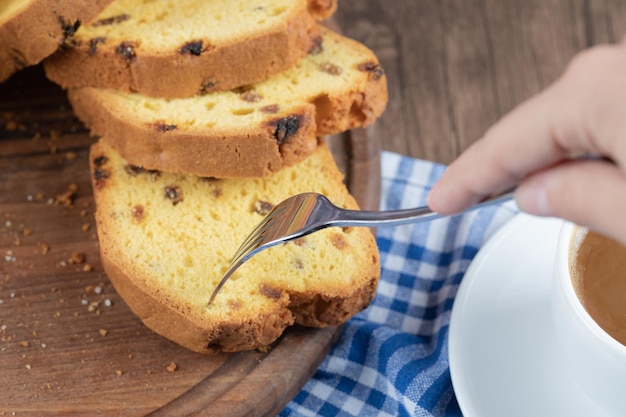Ah, cornbread dressing. Just the name conjures up images of thanksgiving feasts, cozy winter evenings, and the comforting aroma of warm spices filling the air. It's a side dish that’s always a crowd-pleaser, but getting that perfect balance of moistness and texture can be a bit of a culinary dance. You need to know the steps, the timing, and most importantly, the feel of it, to end up with that fluffy, savoury goodness we all crave.
(Part 1) The Art of the Bake: Understanding the Fundamentals

There's more to making a great cornbread dressing than just throwing some ingredients in a bowl and sticking it in the oven. You need to understand the fundamental elements of this dish. It's about layering flavours, achieving the right texture, and mastering the art of timing. I've spent years perfecting my own recipe, and I'm here to share my secrets for achieving that perfect bake.
The Building Blocks: A Foundation of Flavor
First things first, the ingredients. Now, I'm a firm believer in the power of experimentation, but there are some core ingredients that form the foundation of any good cornbread dressing. The cornbread itself is the star, of course, and you want to make sure it's fresh and crumbly. The best cornbread for dressing is made with a slightly coarser grind, and it’s even better if you bake it yourself. That fresh, homemade taste makes a world of difference.
Next, you need the moisture, and that’s where the broth comes in. I'm a stickler for homemade chicken broth, but vegetable broth works just as well. The key is to use a broth with a robust flavour, as it will permeate the entire dressing and create a symphony of tastes. Now, don’t forget the herbs and seasonings. Sage, thyme, and onion are the classic trio, and for good reason. They create a wonderfully aromatic base that’s hard to resist. But don't be afraid to experiment. A pinch of rosemary, some fresh parsley, a few chopped pecans - the possibilities are endless.
And then, there’s the magic of the binder. Breadcrumbs are a traditional choice, but I prefer to use a combination of finely ground crackers and crumbled cornbread for a more complex texture. It gives the dressing a lovely crispness on the edges while retaining a soft, moist center.
Blending the Flavours: A Gentle Touch is Key
Once you've assembled your ingredients, it's time to start mixing. But here’s a crucial point: be gentle. You don’t want to overwork the dressing, as it will become dense and tough. Just combine everything carefully, letting the flavours mingle and the ingredients absorb the broth. I like to let my dressing sit for a bit while I preheat the oven. This allows the flavours to really meld together, creating a more harmonious taste.
(Part 2) Baking Time: Navigating the Temperature and Timing

Now, onto the main event: the baking time. This is where things get a bit more technical, but trust me, it's not as complicated as it seems. It’s all about understanding the relationship between temperature, time, and the type of baking dish you use.
Oven Temperature: A Foundation of Evenness
Firstly, you want to preheat your oven to 350°F (175°C). This will ensure that your dressing cooks evenly and develops a nice golden brown colour. You want to make sure every part of the dressing cooks thoroughly, and that lovely golden brown colour on top tells you it’s achieving that perfect level of doneness.
The Baking Dish: Size Matters for Even Baking
Next, consider the baking dish. I usually use a 9x13 inch baking dish, but you can adjust the size depending on how much dressing you’re making. If you're making a smaller batch, a 9-inch square pan works just as well. Remember, the bigger the dish, the more time the dressing will need to cook through. If you’re using a smaller dish, the baking time might be shorter.
The Bake: A Balancing Act of Texture and Doneness
Now, for the baking time itself. It's a bit of a judgment call, but generally, you'll want to bake your dressing for about 30-45 minutes. But don’t just go by the time alone. You need to check the dressing for doneness. Here’s how:
- The Fork Test: Stick a fork into the center of the dressing. It should come out clean, with just a few moist crumbs clinging to it. If the fork comes out wet, it needs more time in the oven.
- The Golden Glow: The top of your dressing should be golden brown and slightly crispy.
- The Aroma: You’ll know it’s ready when you smell that delicious, toasty aroma filling your kitchen. This is a sign that the flavors are fully developed and the dressing has reached its peak of deliciousness.
(Part 3) From Oven to Table: A Smooth Transition for the Perfect Serve

Once your dressing is baked to perfection, you need to let it rest for a few minutes before serving. This allows the flavors to settle and the dressing to firm up slightly. This is also a chance to make sure the dressing isn't too dry. If it seems a bit too crumbly, you can add a bit of extra broth to moisten it up.
Resting Time: Allowing Flavors to Settle
I usually let my dressing rest for about 15 minutes before serving, but if you’re in a hurry, 10 minutes will do. The key here is to allow the dressing to cool slightly so that the flavors can settle and the texture firms up a bit. This prevents a soggy or mushy result.
Serving Up: A Feast for the Senses
Now, for the moment of truth! When it comes to serving, there are no hard and fast rules. Some people like to spoon it alongside their turkey or ham, while others prefer to pile it on top. Personally, I love to serve my dressing in a separate bowl, so everyone can have a generous helping. The beauty of this side dish is its versatility, and ultimately, it’s all about serving it in a way that highlights its deliciousness.
(Part 4) Beyond the Basics: Elevate Your Dressing with Creative Touches
Now, while the classic cornbread dressing is always a winner, don't be afraid to get creative. Adding some extra ingredients can really elevate the flavour and texture, turning it into a truly unique and satisfying side dish.
Spiced Up Dressing: A Touch of Zing
I’ve been known to add a pinch of cayenne pepper or a few drops of hot sauce to my dressing for a bit of a kick. It’s a simple addition, but it adds a whole new dimension to the dish. It’s a great way to balance out the sweetness of the cornbread and create a more complex flavor profile.
Fruitful Dressing: Sweet and Savory Harmony
If you’re feeling adventurous, try adding some chopped dried fruit like cranberries, apricots, or even apples. The sweetness will complement the savoury flavours of the dressing, creating a perfect balance. I love the tartness of cranberries, but you can also use raisins, cherries, or even chopped dates for a different flavour experience.
Nutty Dressing: A Crunchy Texture
For a bit of crunch, you can add chopped pecans or walnuts. They’ll add a nutty flavour and a nice textural contrast. It’s amazing how a few chopped nuts can elevate the dressing to a whole new level of deliciousness.
Other Additions: Exploring a World of Flavors
You can also incorporate other ingredients like chopped sausage, shredded cheese, or even leftover cooked vegetables. Don’t be afraid to experiment and see what combinations appeal to your taste buds. The key is to keep it balanced and harmonious so that no single flavour overpowers the others.
(Part 5) Cooking Time Variations: Adjusting for Life's Demands
Let’s face it, sometimes life gets in the way, and you might need to adjust your baking time. Don’t worry, it’s not the end of the world. A little flexibility is key when it comes to cooking, and cornbread dressing is no exception.
The Speedy Bake: When Time is of the Essence
If you’re short on time, you can bake your dressing for a shorter period. It won’t be as crispy on top, but it will still be perfectly moist and flavorful. Just keep an eye on it and check for doneness using the fork test.
The Slow Cook: For Extra Flavor
For extra depth of flavour, try baking your dressing for a longer time, say, an hour or more. Just make sure to check on it periodically and add more broth if needed to prevent it from drying out. This is particularly helpful if you're using a large batch of dressing.
(Part 6) Tips and Tricks: Making It Even Better
Now, here are a few extra tips and tricks that I’ve picked up over the years. They’re small things, but they can make a big difference in the overall taste and texture of your dressing.
Butter: A Touch of Richness
Always use real butter when making your dressing. It adds a richness and flavour that you can’t get from margarine. The butter also helps to create a more tender and moist texture, enhancing the overall experience.
The Art of Crumbling: A Key to Success
When crumbling your cornbread, don’t be afraid to break it down into smaller pieces. This will help the dressing cook more evenly and absorb the broth more effectively. It also ensures that every part of the dressing gets a good coating of the broth, resulting in a more consistent and flavorful dish.
Don’t Overcrowd the Pan: A Matter of Space
Don’t overcrowd your baking dish. Give your dressing some space to breathe, or it will steam rather than bake. Overcrowding can also lead to uneven cooking, resulting in some parts being undercooked and others overcooked.
The Broiler: Achieving a Crispy Top
If you want a really crispy top, you can broil your dressing for a few minutes after it’s baked. Just keep a close eye on it, as it can burn quickly. The broiler is a great way to add a touch of crispness to the top of the dressing, creating a nice contrast in texture and a more appealing visual presentation.
(Part 7) The Leftovers: A Second Chance for Deliciousness
Now, we all know that a good cornbread dressing is hard to resist. But, let's be honest, there’s usually some leftover. And guess what? Leftovers are a good thing!
Storage: Preserving the Freshness
Store your leftover dressing in an airtight container in the refrigerator for up to 3 days. You can reheat it in the oven or microwave. Proper storage is essential to maintain the quality and flavor of the dressing.
Reheating: Bringing Back the Flavor
When reheating your dressing, add a little bit of broth to keep it moist. You can also toss in some fresh herbs to enhance the flavor. Reheating properly is important to ensure that the dressing remains moist and flavorful.
Creative Uses: Going Beyond the Usual
Don’t limit yourself to just reheating your dressing. It’s also delicious served cold in sandwiches or salads. You can even crumble it over soups or stews. It's a versatile side dish that can be enjoyed in various ways, so don't be afraid to get creative with your leftovers.
(Part 8) The Science of Baking: Understanding the Process
Now, let's get a little bit scientific. Understanding the process behind baking cornbread dressing can help you fine-tune your technique and achieve that perfect result.
Gluten Development: A Balancing Act
Cornbread is made with cornmeal, which contains very little gluten. Gluten is a protein that gives bread its structure. That’s why cornbread is naturally crumbly. When you add other ingredients like flour or breadcrumbs to your dressing, you’re introducing more gluten, which can make it more dense. So, it's all about finding that balance between texture and flavor. The key is to use just enough binder to hold the dressing together without making it too heavy.
Moisture: The Key to a Delicious Outcome
The moisture content of your dressing is crucial for achieving the right texture. Too much broth will make it soggy, while too little will result in a dry and crumbly dish. The broth provides moisture, and the cornbread soaks it up, creating a delicious, moist, and flavorful dressing.
Heat and Time: The Perfect Combination
The heat of the oven helps the dressing cook evenly and develop a nice golden brown colour. The cooking time allows the flavors to meld and the dressing to firm up. The baking process is essentially a chemical reaction that transforms the raw ingredients into a delicious and satisfying dish.
(Part 9) My Personal Touch: A Recipe for Success
Now, I'm going to share my own personal recipe for cornbread dressing. It's a combination of my favourite ingredients and techniques, and I’m confident it will become a favourite of yours, too!
Ingredients: A Symphony of Flavors
Here's what you'll need:
- 1 loaf of fresh cornbread, crumbled
- 4 cups of homemade chicken broth or vegetable broth
- 1 cup of celery, chopped
- 1 cup of onion, chopped
- 1/2 cup of fresh parsley, chopped
- 1/4 cup of fresh sage, chopped
- 1 tablespoon of dried thyme
- 1 teaspoon of salt
- 1/2 teaspoon of black pepper
- 1/4 cup of melted butter
- 1/2 cup of finely ground crackers, like Ritz crackers
Instructions: A Simple Guide to Flavor
Here's how to make it:
- Preheat your oven to 350°F (175°C).
- In a large bowl, combine the crumbled cornbread, broth, celery, onion, parsley, sage, thyme, salt, and pepper.
- Stir gently to combine, being careful not to overwork the mixture.
- Pour the mixture into a greased 9x13 inch baking dish.
- Drizzle the melted butter over the top of the dressing.
- Bake for 30-45 minutes, or until golden brown and the center is cooked through.
- Let the dressing rest for 15 minutes before serving.
(Part 10) FAQs: Answering Your Questions
I know you might have some questions about cornbread dressing, so here are some FAQs to help you out.
1. Can I use store-bought cornbread for my dressing?
Absolutely! You can certainly use store-bought cornbread, but I recommend choosing one that is fresh and crumbly. Just make sure to crumble it well before adding it to your dressing.
2. How do I know if my dressing is done?
The best way to check if your dressing is done is with the fork test. Insert a fork into the center of the dressing. It should come out clean, with just a few moist crumbs clinging to it. If the fork comes out wet, it needs more time in the oven.
3. What happens if my dressing is too dry?
If your dressing is too dry, you can add a little bit of broth to moisten it up. Just be sure to stir it in gently so you don’t overwork it.
4. Can I make cornbread dressing ahead of time?
Yes, you can make cornbread dressing ahead of time. Just assemble it according to the recipe and then bake it when you’re ready to serve it. You can also store it in the refrigerator for up to 3 days. Just reheat it in the oven or microwave before serving.
5. What are some other ways to use leftover cornbread dressing?
Leftover cornbread dressing is great in sandwiches, salads, and soups. You can also crumble it over stews or use it as a topping for casseroles.
Well, there you have it! My guide to the perfect cornbread dressing, from the baking time to the finishing touches. Now, go out there and experiment with your own creations! And remember, the most important ingredient is a little bit of love and a whole lot of enjoyment. Happy baking!
Everyone is watching

Corn on the Cob: The Ultimate Guide to Perfectly Cooked Ears
Healthy MealsAh, corn on the cob. Just the name evokes images of sunny days, barbecues, and that sweet, juicy flavour that ...

Scallops: The Ultimate Guide to Perfect Cooking
Healthy MealsAh, scallops. Those delicate, sweet, and utterly delicious morsels of the sea. They hold a special place in my...

Spaghetti Squash: The Ultimate Guide to Cooking and Serving
Healthy MealsRemember that time you saw spaghetti squash at the supermarket, looking all bumpy and strange, and thought, "W...

Salmon Cooking Times: Perfect Guide for Every Recipe
Healthy MealsLet me tell you, cooking salmon is an art form. It's all about getting that perfect balance: juicy and tender,...

Ham Cooking Time: How Long to Bake, Smoke, or Boil a Delicious Ham
Healthy MealsAh, ham. It's a classic, isn't it? A real crowd-pleaser, especially around holidays. And when done right, it'...
